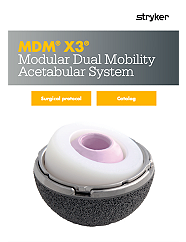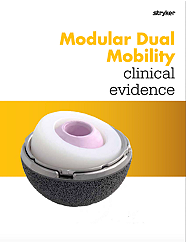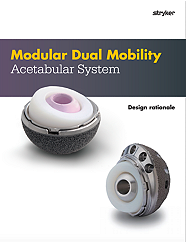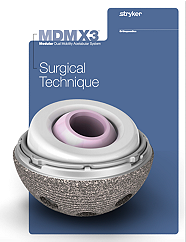Modular Dual Mobility
Mobile Bearing Hip System
Modular Dual Mobility is a premium acetabular offering designed to help prevent dislocation. The system builds upon our Anatomic Dual Mobility offering by providing you a choice of fixation surfaces and screwhole configurations for primary or revision THA.
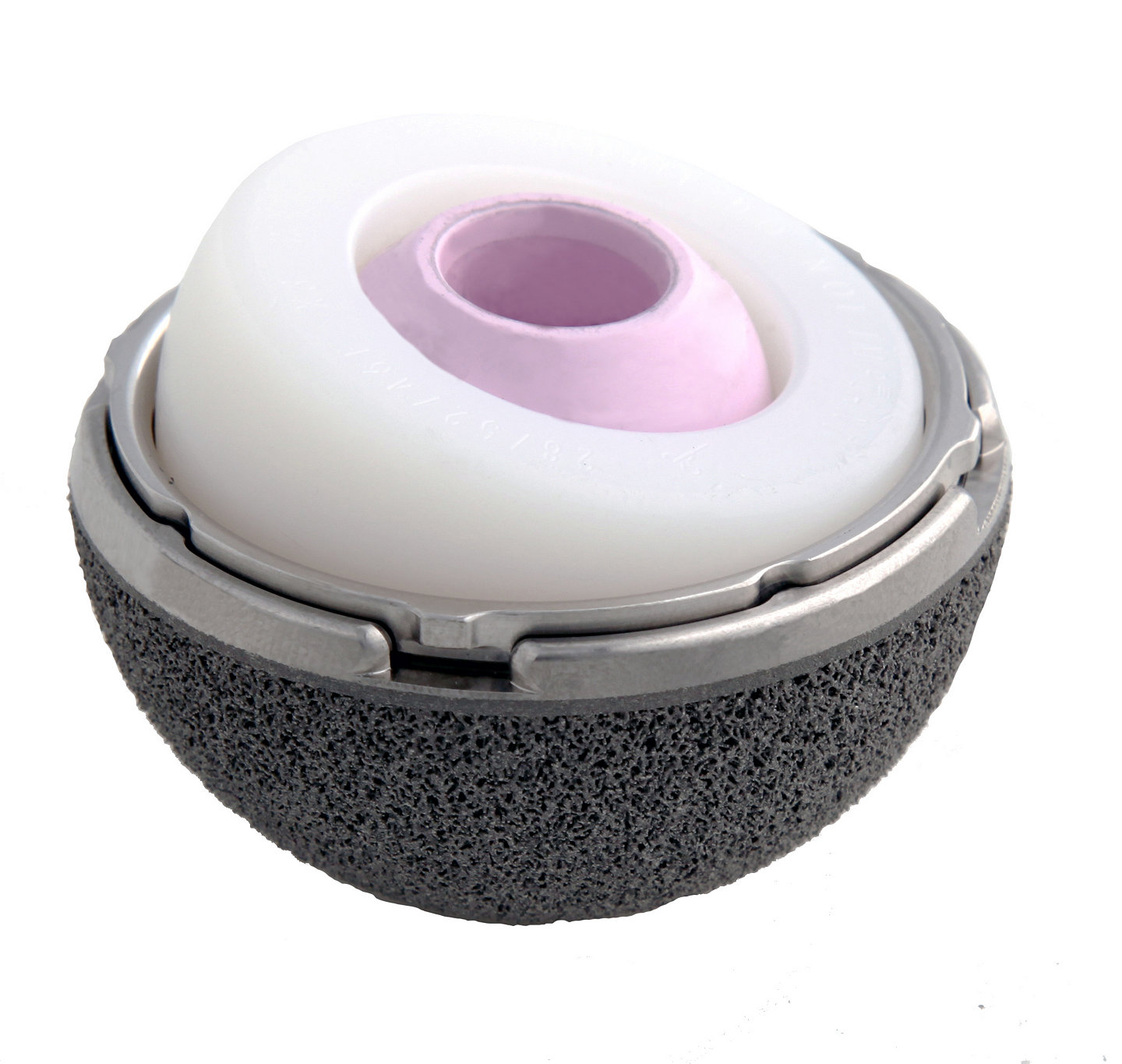
You treat a wide range of patients—you should have a wide range of solutions
Our Modular Dual Mobility with X3 precisely engineered polyethylene is the first modular Mobile Bearing Hip System. MDM is designed to help prevent dislocation and assist your operative goals of stability, longevity and advanced fixation for fractures, primary or revision total hip arthroplasty cases. MDM X3 is compatible with all Trident and Trident II acetabular components, offering you a choice of fixation surfaces and screwhole configurations.
MDM X3 is based on the dual mobility principle with two points of articulation. Dual Mobility bearings marry two well-known concepts in THA:
- The Charnley low-friction arthroplasty (LFA) prosthesis has demonstrated clinically and radiologically that smaller diameter heads produce lower torque force in the acetabular shell and consequently less wear.1,2
- The large head concept from McKee-Farrar recognizes that a large diameter bearing is inherently more stable than a smaller diameter head.1
MDM X3 offers stability with its large head and low-friction design. It has a three-dimensional posterior dislocation distance at 26 degrees of pelvic tilt, that is 59% greater in jump height with MDM compared to a conventional THA with a 36mm head and 81% greater in jump height compared to competitive hard-on-hard bearing.3 MDM X3 Advanced Bearing Technology is designed to minimize the risk of wear, which may prolong the life of the implant and offer your patients greater implant longevity.4,5 Clinical performance of X3 in an RSA Trident study of 21 patients has demonstrated mean linear wear rate of 0.001mm/yr (1 micron) at five years.6
References:
- Philippot R, Camilleri JP, Boyer B, Adam P, Farizon F. The use of a dual-articulation acetabular cup system to prevent dislocation after primary total hip arthroplasty: analysis of 384 cases at a mean follow-up of 15 years. Int Orthop. 2009;33(4):927-932. doi:10.1007/s00264-008-0589-9
- Wroblewski BM, Siney PD, Fleming PA. The principle of low frictional torque in the Charnley total hip replacement. J Bone Joint Surg Br. 2009;91(7):855-858. doi:10.1302/0301-620X.91B7.22027
- Stryker Test Report: RD-10-073. Range of motion and two and three dimensional jump distance of the Modular Dual Mobility Insert. 2010.
- Herrera L, Lee R, Longaray J, Essner A. Edge loading wear due to inclination angle for three contemporary hip bearings. Presented at: Orthopaedic Research Society (ORS) Annual Meeting; March 6-9, 2010; New Orleans, LA.
- Wang A, Essner A, Polineni VK, Stark C, Dumbleton JH. Lubrication and wear of ultra-high molecular weight polyethylene in total joint replacements. Tribol Int. 1998;31(1-3):17-33. doi: 10.1016/S0301-679X(98)00005-X
- Essner A, Polineni VK, Wang A, Stark C, Dumbleton JH. Hip simulator wear of “enhanced” UHMWPE acetabular inserts. Presented at: Orthopaedic Research Society (ORS) Annual Meeting; March 16-19, 1998; New Orleans, LA.
- Essner A, Wang A, Martell J, Edidin A. In-Vitro and in-vivo acetabular cup wear corroboration. Presented at: Orthopaedic Research Society (ORS) Annual Meeting; February 25-28, 2001; San Francisco, CA.
- Callary SA, Field JR, Campbell DG. Low wear of a second-generation highly crosslinked polyethylene liner: a 5-year radiostereometric analysis study. Clin Orthop Relat Res. 2013;471(11):3596-3600. doi:10.1007/s11999-013-3188-z
MDMX3-WC-1_27603

